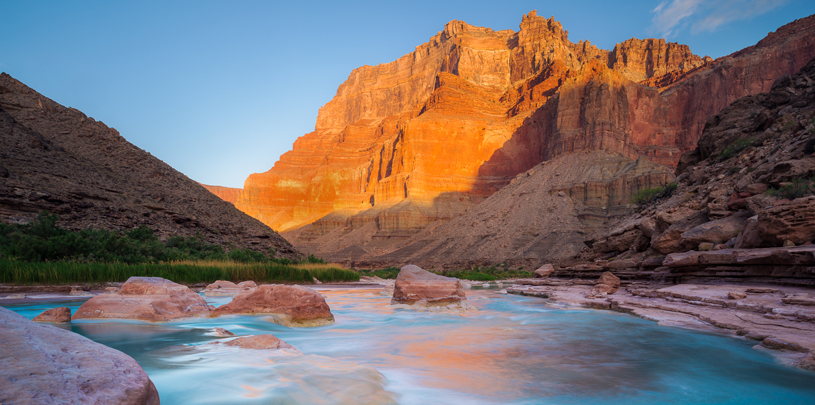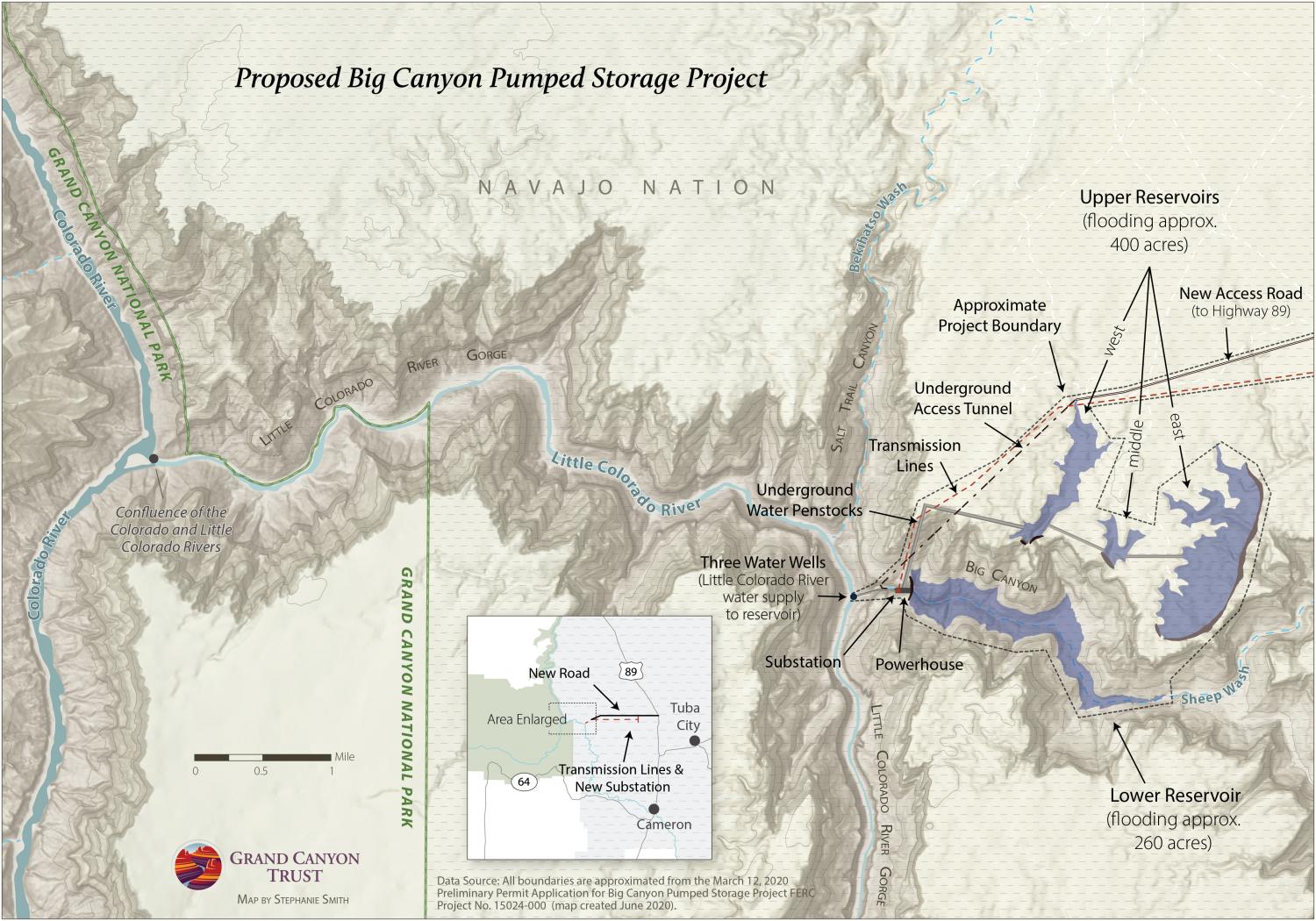
 by Roger Clark, Grand Canyon Director
by Roger Clark, Grand Canyon Director
The Federal Energy Regulatory Commission (FERC) recently rejected objections by the Navajo Nation and granted dam developers permits to plan two massive hydroelectric projects on Navajo land near the confluence of the Colorado and Little Colorado rivers in the Grand Canyon. The permits give the developer three years to conduct feasibility studies and a right to be first in line to license the projects.
Now, FERC is considering a third application from the same dam developers. August 3, 2020 is the deadline for submitting comments on the pumped hydroelectric project application for Big Canyon — a side canyon to the Little Colorado River Gorge — where Navajo families still herd sheep and practice traditions that have sustained them for generations.
TAKE ACTION. Oppose plans to dam Big Canyon near the Little Colorado River ›

The Big Canyon Pumped Storage Project would build four dams and create four reservoirs in and above the Little Colorado River tributary. To fill its reservoirs, wells drilled into the bedrock of Big Canyon would suck 17-19 billion gallons of groundwater a year — an amount of water that could fill over 28,000 Olympic swimming pools.
The Navajo Nation opposed the developer’s two earlier projects, citing potential adverse impacts on its water rights, wildlife resources, and cultural resources. But first and foremost, it said the developers had not “engaged in meaningful consultation with the Navajo Nation or its subdivisions, including the local Chapters where the Project would be located,” nor had they sought “the consent of the Navajo Nation or procure the required clearances and permits for construction of the Project.”
With the public comment period still open on the Big Canyon proposal, FERC must feel the full force of opposition to the blatant disrespect shown to the people and the land.
As it did in response to the first two applications last fall, the District III Grazing Committee of the Navajo Nation passed a resolution to deny the dam developer’s Big Canyon permit request. The grazing district includes locally governed chapters of the Navajo Nation located north of the Little Colorado River. It represents families that hold federally issued permits to graze livestock in and around Big Canyon, where the four dams would be built.
Under Navajo law, grazing permittees must grant unanimous consent for land to be used for anything other than traditional purposes. The grazing committee is vested with authority to review all matters that affect local communities.
District III’s reasons for denying the application include the developer’s failure to notify the grazing committee and because the pumped storage project would harm biological and cultural values recognized by the Navajo Nation’s Division of Natural Resources. These protective designations prohibit industrial development in areas where traditional cultural practices occur and where biological diversity and endangered species exist.
The Navajo grazing district submitted its official comments to FERC on June 8. However, comments by other agencies have been delayed by local, state, and tribal governments’ emergency responses to Covid-19. The U.S. Fish and Wildlife Service is again taking the lead in preparing comments with other federal agencies, but their response has also been slower than last fall’s response to the previous dam applications. Similarly, the Hopi, Hualapai, and other area tribes have yet to submit their comments in opposition to the Big Canyon pumped storage permit application.
Support local opposition by asking FERC to deny the developer's permit. The agency should not grant a private company the right to plan and apply for a federal license on Navajo land without first having asked and obtained the nation's permission.
Need more background to craft your comment? Learn more about the environmental and cultural impacts of the Big Canyon Pumped Storage Project ›
With time running out on FERC’s deadline, please join the massive outpouring of support for those whose voices and ties to the land are once again being ignored.
Please oppose plans to dam Big Canyon. Comment by August 3, 2020.
The Colorado River below Glen Canyon Dam is heating up. Find out why.
Read MoreGroundwater pumping at a uranium mine near the Grand Canyon will affect the canyon's springs, scientists says.
Read MoreArizona Governor Katie Hobbs is the latest elected official to call for an environmental review of Pinyon Plain uranium mine.
Read More